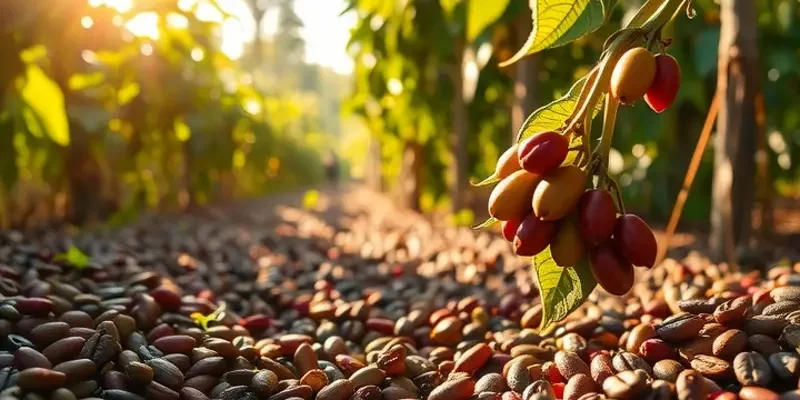Roasting coffee beans at home is an enriching experience that elevates your coffee game. Whether you’re a casual coffee drinker or a budding enthusiast, mastering the roast can lead to exquisite flavors and aromas tailored to your taste. This journey from green beans to a perfect cup of coffee not only enhances your skills but also deepens your appreciation for this beloved beverage. With straightforward methods and tips, you can explore the fascinating world of coffee roasting right in your kitchen.
Gather Your Equipment and Ingredients

As you embark on the rewarding journey of roasting coffee at home, having the right equipment and ingredients can make a world of difference. To achieve a balanced and aromatic roast, ensure you gather these essential items.
First on your list is a coffee roaster. For beginners, a basic air popcorn popper can serve as an effective alternative. The whirring motion of warm air will roast your beans much like commercial roasting machines. Alternatively, consider a stovetop popcorn maker or a dedicated home coffee roaster as you become more serious about your craft.
Next, select quality green coffee beans. These are the raw, unroasted beans that serve as your blank canvas. Sourcing beans from reputable suppliers can ensure you get a consistent and quality output. Experiment with beans from different regions, as the origin significantly influences flavor notes and aroma.
A kitchen scale is indispensable for precision. Roasting is a delicate process requiring the exact measurement of beans for consistent results. Most recipes call for a specific bean-to-heat ratio. A digital scale will provide the accuracy needed for this balance.
Consider investing in a thermometer. While some roasters come equipped with temperature gauges, a standalone digital thermometer offers an added layer of precision. The temperature at which you roast affects the final flavor profile — light roasts typically require temperatures around 356°F (180°C), while dark roasts may exceed 464°F (240°C).
Next, ensure proper ventilation in your roasting area. Improper ventilation can lead to smoke accumulation, which may not only affect your health but also alter the taste of your roast. An exhaust fan or a well-ventilated space is crucial when working indoors.
A heat-resistant container is essential for cooling the beans post-roast. Once beans reach your desired roast level, they need to cool rapidly to prevent over roasting. Metal colanders or baking sheets work well, allowing heat to dissipate quickly.
You’ll also need the basic essentials: oven mitts for handling hot equipment, a wooden spoon for stirring, and a timer for tracking the roast time accurately. These might seem simple, but they play an integral role in ensuring a safe and efficient roasting process.
Finally, explore bean storage solutions to maintain freshness. Airtight jars or coffee canisters keep roasted beans fresh by minimizing exposure to oxygen and moisture. As you store, remember that coffee is best consumed within days of roasting for optimal flavor.
With your equipment and ingredients ready, you’re well on your way to mastering the art of coffee roasting. As you perfect your technique, consider these easy plant-based eating tips to complement your aromatic brews and enhance your holistic coffee experience. By carefully selecting and using your equipment, you’ll unlock the full aromatic potential of each cup, creating a memorable home-roasted coffee experience.
Step-by-Step Coffee Roasting Techniques

Roasting coffee beans at home can be an exciting and rewarding process. With the right techniques, your homemade coffee will rival any store-bought brew. To begin, select the method that best matches your preferences and equipment, be it a pan, popcorn popper, or a dedicated coffee roaster.
1. Choosing Your Method
Opt for pan roasting if you want a tactile experience. A simple frying pan can provide satisfying control over the process. On the other hand, an air popcorn popper or an electric coffee roaster offers more consistency and ease.
2. Preparing Your Workspace
Ensure you have adequate ventilation, as the roasting process produces smoke. Clear your kitchen counter and gather all necessary items such as a spatula, colander, and timer.
3. Weighing Your Beans
Measure out your green coffee beans. A typical batch size for home roasting ranges between 100 to 250 grams, depending on your equipment’s capacity. Remember that beans expand as they roast, so leave room for movement.
4. Heating and Roasting
If using a pan, preheat it over medium heat. For poppers or roasters, follow the manufacturer’s instructions. Once the equipment is hot, add your measured beans. Stir or shake the beans constantly to ensure even roasting. The beans will shift from green to yellow, releasing a grassy aroma.
5. Monitoring the Roast
As beans enter the “first crack” phase, you’ll hear popping sounds, similar to popcorn. This stage indicates a light roast. For a medium roast, continue roasting past the first crack until just before the “second crack.” The beans start producing a more robust aroma and turn brown.
6. Cooling the Beans
Immediately after roasting, transfer the beans to a colander or spread them onto a baking sheet to cool. Rapid cooling is crucial to halt the roasting process and prevent over-roasting.
7. Storing Roasted Beans
Once completely cooled, store your roasted coffee beans in an airtight container away from light and heat. Allow them to rest for 12-24 hours to degas, enhancing the flavor.
For additional tips on keeping your beans fresh, consider exploring eco-smart storage methods, as discussed in this guide to efficient kitchen storage.
Mastering these steps takes practice, so don’t be discouraged if results vary initially. Each roasting session brings insights, gradually refining your process to achieve the perfect roast.
Final words
Roasting coffee beans at home is more than a culinary skill; it’s a journey that transforms your coffee experience. With the right equipment, a few simple techniques, and practice, you can craft coffee that perfectly suits your palate. Enjoy the exploration of flavors and aromas that each roast brings—and remember, every bean tells a story. Embrace the art of roasting and savor your custom brews with pride, knowing you’ve mastered a truly rewarding skill.







